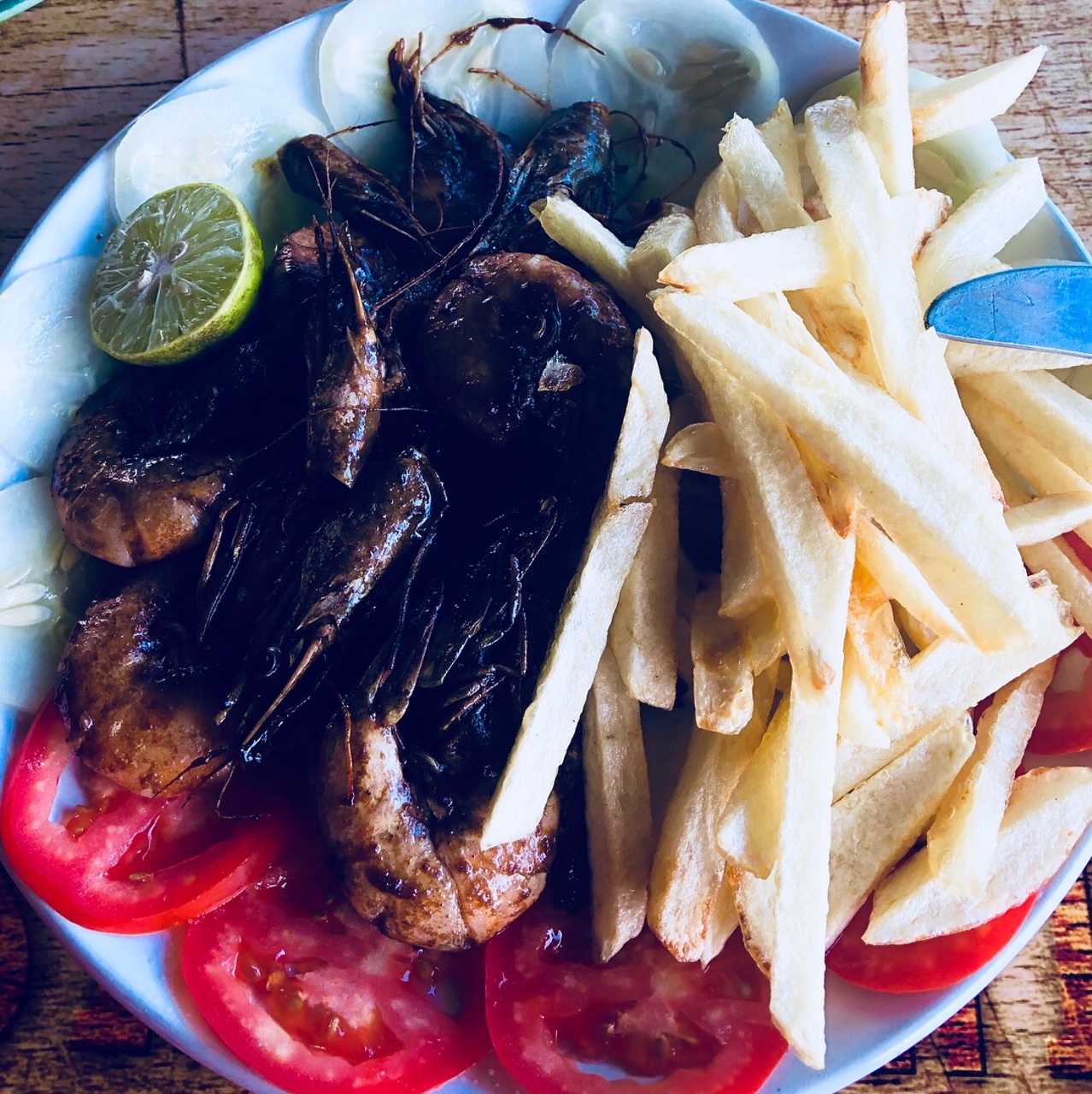Day 42-45: Mahabalipuram
"Must see lists had got longer"
Whilst Chennai’s Marina beach was technically the first glimpse of East India’s seaside our arrival in Mahabalipuram, which also quietly boasts a world heritage site, was really the start of near month long, sand in the toes sojourn through several of the coasts most beautiful beaches.
The town is best known for its temples and rock carvings (sounds a bit pedestrian but really they’re something to behold); stone structures which look like they’ve been built but have in fact been carved from single enormous rocks. And the Giant Butter Ball of course… Krishna’s butter ball to be precise – a huge yellow boulder which seems to balance precariously on the side of a hill. The british apparently tried to move it but several attempts and a herd of very tired elephants later they decided just to leave well alone…
Butterball. Pictured here with a big rock.
Mahabs (easier for us to say and indeed write here) got its name from the 7th century king’s nickname Mamalla which means Great Wrestler and was once a major seaport of the ancient Pallava kingdom – a cause of amusement for me during our time there (just me then). Now it thrives around the daily tourist influx to its sights and was the place where we happily pressed pause and listened to the waves for a while.
Perhaps we hadn’t quite admitted it to ourselves but there was a fair chance we’d been ‘suffering’ a little with big city burnout. Must see lists had got longer and whilst there hadn’t been a moment of regret at any of the 4am starts to get the best view or longer than we’d like queues arriving in a place we could happily circumnavigate in less than an hour was a small joy. And that was really the story of Mahabs – one small joy after another. Grilled prawns the size of my hand and ice cold beer in toby jugs (a trend we encountered in many establishments without liquer licenses); cows sunbathing on beaches alongside sun seekers of the human kind); Jacko seemingly back to full strength but still requiring regular pitstops to bars also showing the cricket...
It was as it turned out the perfect warm-up act for what came next – practically perfect Pondicherry.
"Long lost to the sea"
With the famed beaches and party towns of the west coast still thousands of miles away, we’re pleased to ease ourselves into some coastal relaxation here in Mahabilapurum, a mysterious and ancient town, baking under a brutal sun. At first glance, there’s little to the place; a few dusty streets lined with cheap guesthouses and restaurants; seafood a speciality, big fresh crustaceans sold for pennies. It’s very quiet in town. Locals and a handful of dissolute hippies, eschewing commercialised Rishikesh in the north or overrun Goa in the West. Mahabilapurum has suffered calamitous and extreme weather in recent times, which goes some way to explaining why it’s so empty even now, in season. Just months ago the Tamil Nadu coastline was assaulted by a cyclone rising out of the Bay of Bengal, destroying housing and leaving dozens dead on land and over 200 fishermen lost at sea. The fishermen here never learn to swim, a local resident tells me, solemnly.
Mahabilapurum is famed for its Shore Temples, intricate pagodas dedicated to Shiva, over 1,000 years old and carved into rather than built out of coastal rock, products of the Palava dynasty of whom almost nothing is known. Most have been long lost to the sea but those that remain jut up out of the beach and the shallows, impressive and very ancient. The area was hurt badly by the tail end of the Boxing Day tsunami that ravaged Indonesia and Sri Lanka in 2004 and many of the established fishing communities are resettled in modern but charmless government housing designed to better withstand the elements.
Inevitably this has impacted the character of the place as the weather had impacted both the tourist and fishing economies. An unexpected consequence of the tsunami was the reshaping of the coastline; the sea withdrew and revealed an undiscovered complex of Shiva-dedicated temples, preserved underwater since the fifth century. This has helped boost the region’s main draw - additionally, domestic tourism is a growing business and national and state governments have poured investment into archaeology and monument preservation in a bid to capitalise on a resurgence of patriotic interest in Indian history; it’s something we’ve seen again and again. As we walk a little further afield, we come across coachloads of indian tourists, matched in number by large groups of devoted pilgrims come to worship in the sacred places. With them comes bustle and business and while Mahabilapurum has taken its knocks in recent years there’s a cheerful energy around the remarkable archaeological artefacts that makes our stay here a memorable one.








